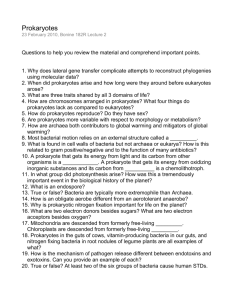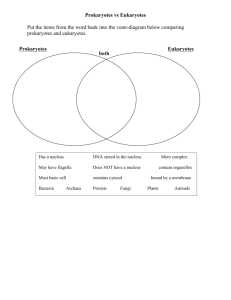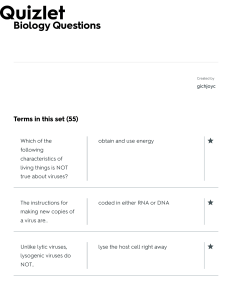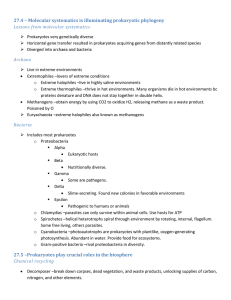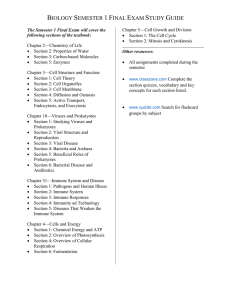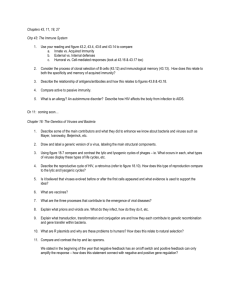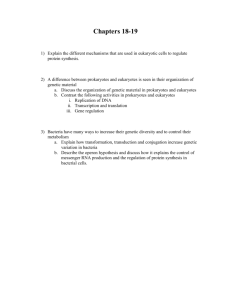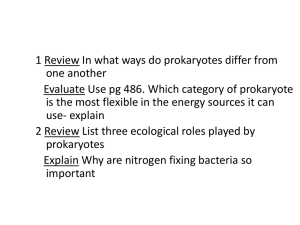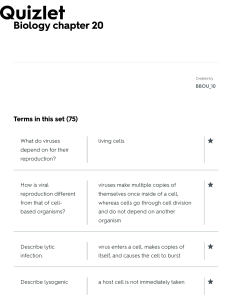Chapter 20 Study Guide Multiple Choice The instructions for making
advertisement
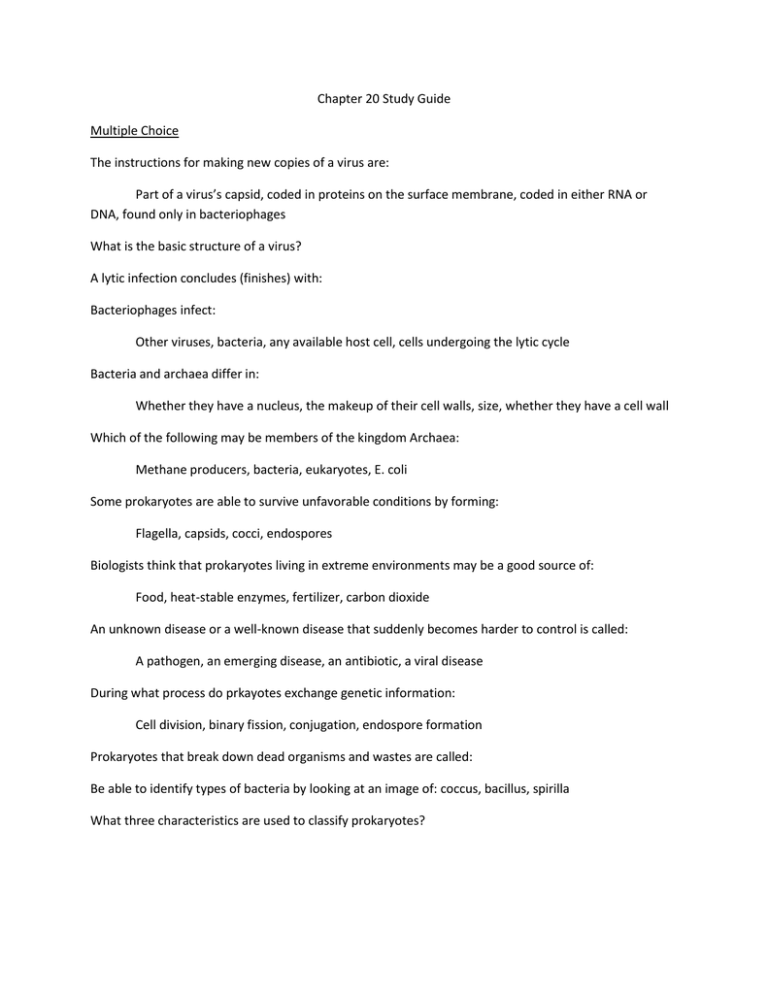
Chapter 20 Study Guide Multiple Choice The instructions for making new copies of a virus are: Part of a virus’s capsid, coded in proteins on the surface membrane, coded in either RNA or DNA, found only in bacteriophages What is the basic structure of a virus? A lytic infection concludes (finishes) with: Bacteriophages infect: Other viruses, bacteria, any available host cell, cells undergoing the lytic cycle Bacteria and archaea differ in: Whether they have a nucleus, the makeup of their cell walls, size, whether they have a cell wall Which of the following may be members of the kingdom Archaea: Methane producers, bacteria, eukaryotes, E. coli Some prokaryotes are able to survive unfavorable conditions by forming: Flagella, capsids, cocci, endospores Biologists think that prokaryotes living in extreme environments may be a good source of: Food, heat-stable enzymes, fertilizer, carbon dioxide An unknown disease or a well-known disease that suddenly becomes harder to control is called: A pathogen, an emerging disease, an antibiotic, a viral disease During what process do prkayotes exchange genetic information: Cell division, binary fission, conjugation, endospore formation Prokaryotes that break down dead organisms and wastes are called: Be able to identify types of bacteria by looking at an image of: coccus, bacillus, spirilla What three characteristics are used to classify prokaryotes? True/False Looking at cell images, be able to identify the parts tin order to answer correct or incorrect labeling: false: Many archaea live in harsh environments, such as hot springs. An antibiotic is a preparation of weakened or killed viral proteins. Completion An animal that is infected by ___________ will eventually die because so many of these particles accumulate in brain cells that the cells are damaged. The process by which prokaryotes change nitrogen gas to a form that plants can use is called ______________. In lysogenic infection, the viral DNA that is embedded in a host cell’s DNA is called a(n) _____________. Short Answer What is a prophage? Describe how viral infections are treated and prevented. In a hospital, several patients become infected with a bacterium after surgery. The patients are not responding to antibiotics. By what type of disease are these patients likely infected, and why is it such a risk? Essay (answer one for 5 pts extra credit) 1. What are three roles of prokaryotes in the environment? How would other organisms be affected if the prokaryotes that fulfilled each of these roles disappeared? 2. Explain how the two groups of prokaryotes differ. Based on what scientists know about their characteristics, what can scientists infer about the evolution of prokaryotes?
